Magnificence of Rococo. Kaendler’s Meissen Porcelain Figures
May 24 – September 29, 2024
At the age of 25, Johann Joachim Kaendler (1706–1775) was appointed court sculptor by Augustus the Strong (r. 1694–1733). In the same year he joined the Meissen porcelain manufactory as a modeller, to which he remained loyal throughout his life.
Kaendler’s name is closely associated with the golden age of the Meissen manufactory in the 18th century. Here, he demonstrated his artistic and technical talent in creating numerous porcelain sculptures, which are still highly valued as collectors’ items today. At the same time they are still part of the manufactory’s repertoire.
The choice of themes in Kaendler’s works reflects the courtly life of the period, which ranged from the late Baroque through the Rococo to the emerging Classicism. Until the end of the Saxon-Polish joint reign in 1763, the nobility and the court were almost the only clients of the manufactory, before the emerging middle classes finally discovered porcelain for themselves.
Accordingly, Kaendler's early works are oriented towards the preferences and fashions of the court. Hunting and theatre – especially the popular Commedia dell’arte – played a central role here, as did the Masonic Order, which was replaced by the Order of the Pug after the papal ban of 1738.
In 1736, for the first time Kaendler created one of the highly esteemed crinoline groups, which often depicted men and women in everyday court life, also in an amorous context. They were named after the ladies’ flared skirts, which were given their shape by a framework of fishbone.
Alongside love adventures, the pastoral idyll, the simple life, was one of the secret longings of the nobility. This trend found its most famous manifestation in the Hameau of the French Queen Marie Antoinette (1755–1793) in Versailles. Kaendler served this fad with figures from the people, craftsmen, peasants and, last but not least, the ‘Cris de Paris’ (Cries of Paris), which embody various professions.
Increasing world trade and travel reports from distant countries stimulated people’s curiosity at that time. Exotic depictions of all kinds were in vogue. Artists and craftsmen endeavoured to satisfy the wishes of their customers with ever new subjects, which, however, were often far removed from reality – and few could verify it anyway.
Kaendler devoted himself to the subject in his own way. He modelled figures in the national costumes of various peoples as well as animals that were foreign to Central Europeans at the time, such as elephants, lions and dromedaries, to name but a few. The chinoiseries had long since developed into a fashion in their own right. Kaendler did not limit himself to shaping individual figures in their characteristic costumes and physiognomy, but also created family scenes with a unique charm.
Kaendler’s surviving notes from the 1740s prove his productivity. The surviving porcelain sculptures bear witness to his creativity, his genius. Thus, within a few years, a world of his own was created in porcelain, which was enjoyed by the society of the time. Even if tastes have changed since then, Kaendler still proves to be a gifted artist when we take a closer look.
The exhibition jointly organised by the Röbbig Gallery and Wawel Royal Castle will present, for the first time in Poland, a magnificent group of figures by Johann Joachim Kaendler from European private collections. The exhibition will be an excellent pendant to the Wawel collection of Meissen porcelain, which centres around stately objects that create illustrate how the manufactory worked to elevate the prestige of the Wettin court. Wawel Hill was the seat of Polish kings from 1025, and coronations took place here, including that of Augustus II the Strony and his son Augustus III. The figurines presented by the Röbbig Gallery served the more private needs of porcelain lovers all over the world and continue to do so today. Together, the two collections will provide an opulent picture of life in the palaces and residences of the mid-eighteenth century.
At the age of 25, Johann Joachim Kaendler (1706–1775) was appointed court sculptor by Augustus the Strong (r. 1694–1733). In the same year he joined the Meissen porcelain manufactory as a modeller, to which he remained loyal throughout his life.
Kaendler’s name is closely associated with the golden age of the Meissen manufactory in the 18th century. Here, he demonstrated his artistic and technical talent in creating numerous porcelain sculptures, which are still highly valued as collectors’ items today. At the same time they are still part of the manufactory’s repertoire.
The choice of themes in Kaendler’s works reflects the courtly life of the period, which ranged from the late Baroque through the Rococo to the emerging Classicism. Until the end of the Saxon-Polish joint reign in 1763, the nobility and the court were almost the only clients of the manufactory, before the emerging middle classes finally discovered porcelain for themselves.
Accordingly, Kaendler's early works are oriented towards the preferences and fashions of the court. Hunting and theatre – especially the popular Commedia dell’arte – played a central role here, as did the Masonic Order, which was replaced by the Order of the Pug after the papal ban of 1738.
In 1736, for the first time Kaendler created one of the highly esteemed crinoline groups, which often depicted men and women in everyday court life, also in an amorous context. They were named after the ladies’ flared skirts, which were given their shape by a framework of fishbone.
Alongside love adventures, the pastoral idyll, the simple life, was one of the secret longings of the nobility. This trend found its most famous manifestation in the Hameau of the French Queen Marie Antoinette (1755–1793) in Versailles. Kaendler served this fad with figures from the people, craftsmen, peasants and, last but not least, the ‘Cris de Paris’ (Cries of Paris), which embody various professions.
Increasing world trade and travel reports from distant countries stimulated people’s curiosity at that time. Exotic depictions of all kinds were in vogue. Artists and craftsmen endeavoured to satisfy the wishes of their customers with ever new subjects, which, however, were often far removed from reality – and few could verify it anyway.
Kaendler devoted himself to the subject in his own way. He modelled figures in the national costumes of various peoples as well as animals that were foreign to Central Europeans at the time, such as elephants, lions and dromedaries, to name but a few. The chinoiseries had long since developed into a fashion in their own right. Kaendler did not limit himself to shaping individual figures in their characteristic costumes and physiognomy, but also created family scenes with a unique charm.
Kaendler’s surviving notes from the 1740s prove his productivity. The surviving porcelain sculptures bear witness to his creativity, his genius. Thus, within a few years, a world of his own was created in porcelain, which was enjoyed by the society of the time. Even if tastes have changed since then, Kaendler still proves to be a gifted artist when we take a closer look.
The exhibition jointly organised by the Röbbig Gallery and Wawel Royal Castle will present, for the first time in Poland, a magnificent group of figures by Johann Joachim Kaendler from European private collections. The exhibition will be an excellent pendant to the Wawel collection of Meissen porcelain, which centres around stately objects that create illustrate how the manufactory worked to elevate the prestige of the Wettin court. Wawel Hill was the seat of Polish kings from 1025, and coronations took place here, including that of Augustus II the Strony and his son Augustus III. The figurines presented by the Röbbig Gallery served the more private needs of porcelain lovers all over the world and continue to do so today. Together, the two collections will provide an opulent picture of life in the palaces and residences of the mid-eighteenth century.

Elephant with sultan, mounted as pendula
Model by Peter Reinicke, c. 1749
Meissen, 1749–1750
Mounts: gilded bronze, France, c. 1750
Model by Peter Reinicke, c. 1749
Meissen, 1749–1750
Mounts: gilded bronze, France, c. 1750

Japanese lady with two children and teapot
Model: most probably by Peter Reinicke, c. 1759
Meissen, 1759–1760
Private collection
Model: most probably by Peter Reinicke, c. 1759
Meissen, 1759–1760
Private collection

Lady on a reception chair with a side table
Model: Johann Joachim Kaendler, 1737
Meissen, 1737–1740
Private collection
Model: Johann Joachim Kaendler, 1737
Meissen, 1737–1740
Private collection

Pair of large lions, mounted
Model: Johann Joachim Kaendler, 1748
Meissen, 1748–1750
Private collection
Model: Johann Joachim Kaendler, 1748
Meissen, 1748–1750
Private collection
Important Meissen porcelain in Munich – lecture by Dr. Katharina Hantschmann
For centuries the Bavarian rulers strove to demonstrate their high status by developing a glittering court life, engaging the best artists and ordering outstanding and most fashionable items of decorative art. Prince Elector Carl Albrecht who was even elected emperor in 1742, ordered in Augsburg a unique service of Chinese and Meissen porcelain completely covered with gold and magnificently etched. As he was related to the Saxon court he was also early owner of Meissen porcelain such as a table fountain or four tea services with Chinese scenes exposed on tiered silver stands. 1968 the German industrialist Dr. Ernst Schneider donated the greatest part of his Meissen collection with more than 2000 pieces to the Bavarian State. His prerequisite for exhibiting the collection in a Baroque palace was fulfilled by placing it in Lustheim Castle, a summer residence of the Bavarian rulers. The famous collection of early Meissen porcelain ranks second only to the Zwinger in Dresden. The lecture will discuss some of the most interesting pieces of both collections. Speaker: Dr. Katharina Hantschmann
It would be hard to find a better place to exhibit porcelain masterpieces than the Wawel Royal Castle. For the duration of this exhibition, Wawel Castle has been transformed into the stage of an 18th century theatre, where the porcelain figurines delight the eyes of the audience with the mastery of their workmanship. Exhibition designer Massimo Pizzi Gasparon Contarini talks about the metamorphosis of the Column Hall on the first floor of the castle and Kaendler's still inspiring work.
Running the Munich antiquities gallery, Alfredo Reyes and Gerhard Röbbig had been preparing for years to realise a spectacular exhibition of 18th-century figures by Johann Joachim Kaendler. This dream has come true at Wawel Castle in the form of the exhibition "Magnificence of Rococo. Kaendler’s Meissen Porcelain Figures".
Dr Claudia Bodinek, curator of the exhibition, tells us about the history of Meissen porcelain and the unique collaboration between the Röbbig Gallery München and Wawel Castle.
Dr Claudia Bodinek, curator of the exhibition, tells us about the history of Meissen porcelain and the unique collaboration between the Röbbig Gallery München and Wawel Castle.
Co-financed with funds from the Minister of Culture and National Heritage of the Republic of Poland


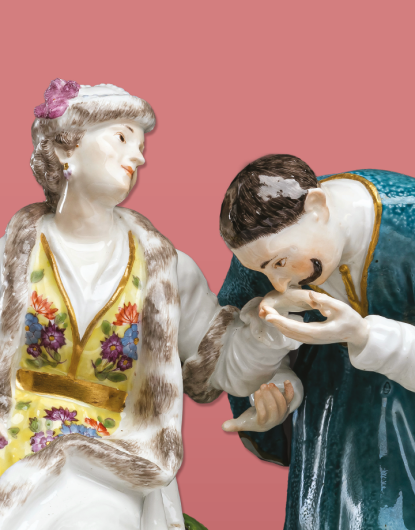
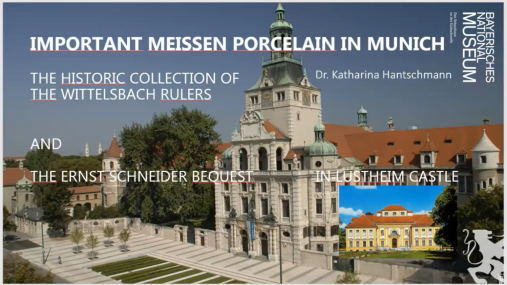


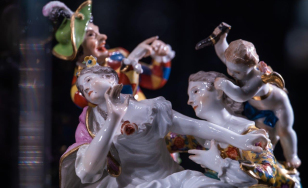
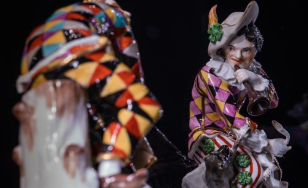
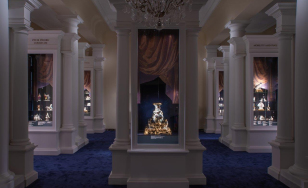
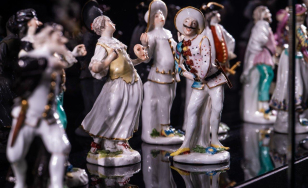
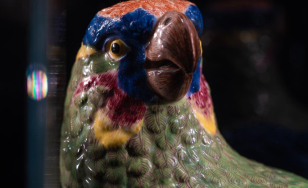
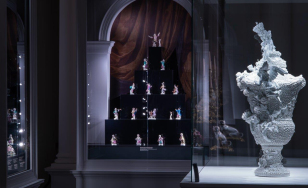
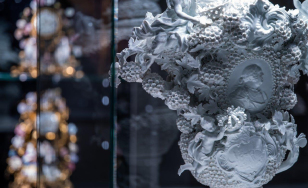
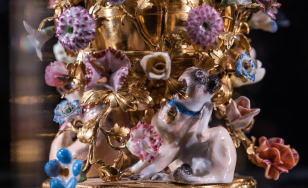
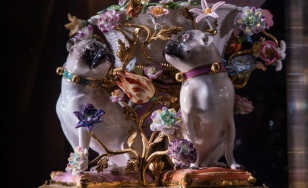
 Exhibition Partner
Exhibition Partner
 Patron of the Wawel Royal Castle
Patron of the Wawel Royal Castle
 Strategic Partner of the Wawel Royal Castle
Strategic Partner of the Wawel Royal Castle
 Education Patron of the Wawel Royal Castle
Education Patron of the Wawel Royal Castle
 Partner of the Exhibition “ Magnificence of Rococo.”
Partner of the Exhibition “ Magnificence of Rococo.”
 Advertising Partner
Advertising Partner











